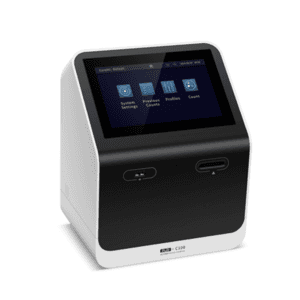

Reference to this article: ConductScience, Ultimate Guide to Automated Cell Counter: Plus Purchasing Tips (2022). doi.org/10.55157/CS20220614
Cell counting is routinely performed in life science research labs and medical diagnosis and treatment. There are many ways to count cells in labs, which do not require special equipment.
However, the use of equipment and instruments increases the accuracy of the obtained data. Additionally, they make the process faster and easier, even when working with more samples or needing to analyze large sample volumes.
The two categories of cell counting are manual counting and automated counting. The manual counting is done using a counting chamber or hemocytometer and plating or colony-forming unit (CFU) counting method.[1] In contrast, automated cell counting involves automated, high-throughput, specialized machines that automatically count the cells.
This article discusses the different automated cell counters, their principle and types, and how to choose the right automated cell counter for your lab.

Figure: An image of an automated cell counter machine.
An automated cell counter is a machine that either works on the principle of image analysis or electrical impedance to count cells automatically.[2]
These cell counters are based on two basic principles: electrical impedance and the light scattering principle.[3]

Figure: An illustration of the electrical impedance principle of cell counting.[3]
The electrical impedance is also known as the Coulter principle.[3] Here, an increase in electrical resistance or impedance is observed each time a cell passes through an aperture similar to the size of cells present between two electrodes.
This change in impedance is directly proportional to the cell volume, which helps to count the number of cells in the sample’s given volume.[3]

Figure: An illustrative diagram of the light-scattering cell counting experiment.[4]
The principle is based on the observation that cells, like blood cells, scatter into small angles when visible light is incident on them.[4]
Here, when a light beam is passed across a stream of diluted cells, it is deflected due to the cell, and the deflection is detected by the photodetector, which gives the number of cells present in the sample’s given volume.[4]
Based on different working principles, there are mainly four types of automated cell counter methods for different lab applications.[1]
In addition to determining the cell count, the device is also used to measure the cell volume in electrolytes. It is cheaper than a flow cytometer and has applications in particle characterization, hematology, and counting various cells, such as fat cells, plant cell aggregates, bacteria, and stem cell embryoid bodies.[5]
This method involves using a microscope and statistical classification algorithm to carry out automated cell detection and then counting cells by image analysis.[1]
Here, cells move in a narrow stream in the front of the laser beam, which, when hit, reflects the cells on a detector that keeps the cell count. This method is also used to analyze cell shape, their internal and external structures, and determine the number of proteins and certain biochemicals.[1]
Flow cytometry is the most expensive technique among automated cell counter techniques.
In this method, cells are counted in histological sections. It utilizes a systematic and random sampling strategy to determine the frequency of objects or count the cell numbers.[1]
However, the technique is not fully automated as it involves manual decisions in sampling or including cells for the counting procedure and analysis.
Automated cell counter machines work differently. So, it’s highly recommended to go through the user manual that comes with the commercial instruments to learn about their workings and procedures they can perform.
Below is the workflow for the most commonly used commercial automated cell counters:
The sample for cell counting can either be prepared without or with trypan blue staining.[7]
If you observe “value out of range” on your screen, view the image captured and provided by the machine and determine if you need to dilute the cell suspension.[7] Once done, remove the counting slides from the slot and dispose of them as biohazardous waste.
You’ve learned how a spectrum of automated cell counters is commercially available, working on different principles. So, how can you decide which one fits your needs? We’ve made this easy for you by compiling a list of factors that you can follow before acquiring an automated cell counter.
The size of the cell counting area and variation in the data due to multiple counters influence the accuracy of the counted cells. And it’s believed that a larger area of counted cells and more sophisticated algorithms work best as they enable the correction in the hardware inequality and reduce the data variability.[8]
The automated cell counters are available with different features, including a user-friendly interface and button operator interface.[9] So, pick a system that is easy for you to operate, has features suiting your requirements, and produces consistent and accurate results within a short time.
When working on high-throughput research, you want your data to be reproducible. Look for an automated cell counter with a defined measuring area for the cell counts. This way, you will get equal sizes of the captured images, reducing or eliminating variations in the field of view.[8]
A cell suspension often consists of both living and dead cells because it’s quite impossible to remove the debris and dead cells during sample preparation completely. But when counting cells, you don’t want to count the dead cells as living cells.
To help with this, the automated cell counters distinguish the live cells from dead ones by black edges and white centers.[8] So when purchasing an automated cell counter, make sure it has the autofocusing technology and high camera resolution.
Some cells remain as cluster cells during sample preparation, and during counting, the cell counters might count them as one cell. This can shake the accuracy and reliability of your result. So, look for those automated cell counters that come with integrated software to recognize clustered cells and count each cell in the cluster.[8]
The storage and memory of the cell counters is one essential factor in making your counting process a sliding ride. If you need to run a large number of samples routinely, then it’s preferable to purchase counters with better storage features.[8] Also, check the number of results it can store at a time.
It’s essential to purchase your automated cell counter from a known supplier. This will ensure you have a system with updated, first-hand software that works efficiently,[9], and they should also offer repair services.
Moreover, experienced suppliers can often help you choose the right equipment, fitting your needs and budget.
Automated cell counters are available in many forms, benchtop, hand-help, or bulky forms. So, if you have constrained space, look for counters that take less space but have all the features you need to facilitate your process.
What’s your assigned budget for the cell counter? Also, consider the prices of accessories or consumables of the equipment, such as disposable slides. Based on that, look for a supplier who can help you avail the equipment in your budget with effective maintenance services and service contracts.
Automated cell counters are instruments used in life sciences labs to count cells. It works on the principle of image analysis or electrical impedance to count the number of cells in the given sample.
The automated cell counters provide many benefits over manual ones, such as faster and more accurate results, less labor work, running multiple samples, and data storage. However, there’re also limitations to the machine, including the inability to differentiate dead cells from live cells and counting a cluster of cells as individual cells.
Different automated cell counters have different working principles and thus have different features and operational capabilities. Therefore, it’s necessary to consider machine features, storage, lab space, user interface, accurate focusing and cell counting, and budget when purchasing automated cell counters.
Our automated cell counter has got you covered if you need a faster and more efficient way to count cells from a reliable supplier at an affordable cost.
